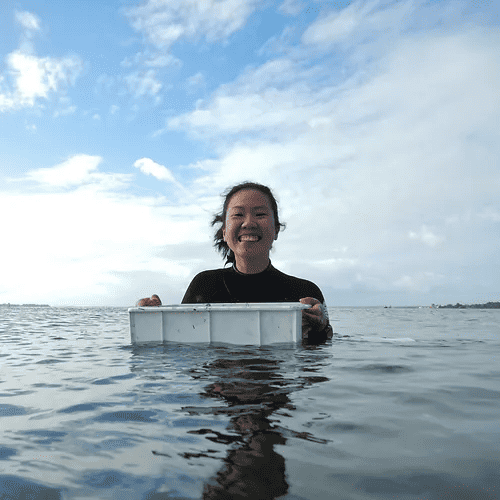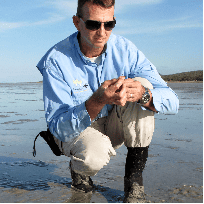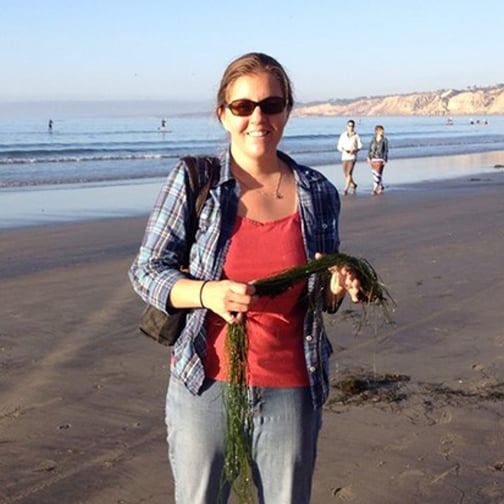
About the World Seagrass Association
Green sea turtle over seagrass, Saint-Pierre, Martinique | Michele Roux / Ocean Image Bank
The World Seagrass Association (WSA) is a global network of scientists, coastal managers, and stakeholders committed to the research, protection, and management of the world’s seagrasses. The association supports training and information exchange and raises global awareness of seagrass science and environmental management issues.
The idea for the association has its genesis in a keynote address by Professor Ronald Phillips at the Third International Seagrass Biology Workshop in 1998. The keynote brought up the seagrass objectives defined in the International Decade of Ocean Exploration in the 1970s, and a key issue raised during the first two International Seagrass Biology Workshops held in Kominato, Japan and Perth, Western Australia: The decline of seagrass habitats and the negative environmental impact if this is not mitigated.
Seagrass and coral, Komodo, Indonesia | Credit: Matt Curnock / Ocean Image Bank
Freediver over seagrass (Cymodocea nodosa) | Credit: Liam McGuire / Ocean Image Bank
We recognized that as experts in the field, there was a need for closer global collaboration to reduce knowledge gaps and reverse the course of global decline in seagrass habitats. Since then, WSA has started new initiatives and facilitated closer collaboration through supporting the International Seagrass Biology Workshop series, the development of the first Global Atlas of Seagrass, and most recently, spearheading an effort to develop a UN-recognized World Seagrass Day, in order to heighten global awareness on these important ecosystems.
Today we organize to answer the call to action made by the
Today we organize to answer the call to action made by the
WSA Committee
Members of the World Seagrass Association are part of an international community that shares an interest in seagrasses, their biology, conservation, and management. If you are Interested in becoming a member of our organization, please email us at: wsa.membership@gmail.com.
Members of the World Seagrass Association are part of an international community that shares an interest in seagrasses, their biology, conservation, and management. If you are Interested in becoming a member of our organization, please email us at: wsa.membership@gmail.com.
Committee Members
MANAGEMENT Committee
President
Benjamin Jones
Vice President
Emma Jackson
Treasurer
Yi Mei Tan
Secretary
Len McKenzie
Immediate-Past President
Jessie Jarvis
Steering Committee
Carol Conacher (Australia)
Brooke Landry (USA)
Jennifer Verduin (Australia)
Jillian Ooi (Malaysia)
Jimena Samper-Villarreal (Costa Rica)
Kathryn McMahon (Australia)
Lucy Coals* (Australia/UK)
Paul Erftemeijer (Australia/Europe)
María Bernal Gómez (Sweden)
Maru Bernal (Mexico/Sweden)
Mike van Keulen (Australia)
*Student representative
WSA Committee
Members of the World Seagrass Association are part of an international community that shares an interest in seagrasses, their biology, conservation, and management. If you are Interested in becoming a member of our organization, please email us at: wsa.membership@gmail.com.
Members of the World Seagrass Association are part of an international community that shares an interest in seagrasses, their biology, conservation, and management. If you are Interested in becoming a member of our organization, please email us at: wsa.membership@gmail.com.
Committee Members
MANAGEMENT Committee
President
Benjamin Jones >
Vice President
Emma Jackson >
Treasurer
Yi Mei Tan >
Secretary
Len McKenzie >
Immediate-Past President
Jessie Jarvis >
Steering Committee
Carol Conacher (Australia)
Brooke Landry (USA)
Jennifer Verduin (Australia)
Jillian Ooi (Malaysia)
Jimena Samper-Villarreal (Costa Rica)
Kathryn McMahon (Australia)
Lucy Coals* (Australia/UK)
Paul Erftemeijer (Australia/Europe)
María Bernal Gómez (Sweden)
Maru Bernal (Mexico/Sweden)
Mike van Keulen (Australia)
*Student representative
The Bolinao Declaration, 1998
We, participants of the third International Seagrass Biology Workshop (ISBW 3), meeting at the Marine Science Institute Bolinao Marine Laboratory in Pangasinan, Philippines, 23 April 1998: Recognizing that the seagrass meadow is one of the coastal ecosystems impacted by development and is characterized by its high biodiversity, productivity, and wide spectrum of functions;
Mindful that a worldwide rapid seagrass decline has been associated largely with human intervention on coastal processes in the form of industrialization, recreation, watershed runoff, agricultural land uses, dredge and fill operations, eutrophication, and unsustainable fishing practices;
Juvenile cowfish in seagrass, Sydney, Australia | Jayne Jenkins / Ocean Image Bank
Recalling the catastrophic consequences to fisheries and coastal economies of seagrass degradation and loss by ‘wasting disease’ in the North Atlantic in the early 1930s, the loss in the 80s of seagrasses in Chesapeake Bay, San Francisco Bay (USA), and Cockburn Sound (Australia);
and recent seagrass declines in the Mediterranean, South Florida, Southeast Asia, and other parts of the tropical world;
Mindful that the steady global loss of seagrass habitats results in loss of important ecological functions and values to human populations, including reduction in fisheries productivity, water quality, sediment stability, and coastal ecosystem biodiversity;
Acknowledging the significant input of past and recent advances in seagrass research in addressing environmental issues, while recognizing wide gaps in knowledge, policies and management that hinder efforts towards the sustainable use of the ecosystem’s resources;
Guided by the principles set forth in Part D of Chapter 17 (para 17.85) of Agenda 21, the comprehensive action plan adopted by UNCED in 1992, which provides: “States should identify marine ecosystems exhibiting high levels of biodiversity and productivity and other critical habitat areas and should provide necessary limitations on use of these areas, …(and that) Priority should be accorded to seagrass beds…”;
Reminded by the objectives of the seagrass initiative set forth in the International Decade of Ocean Exploration in the 1970s, the concerns raised by scientists at the ISBW 1 in Kominato, Japan (1993), and at the ISBW 2 in Perth, Western Australia (1996), as well as relevant conventions such as the Universal Declaration of Human Rights, Convention of Biological Diversity, Ramsar Convention and the various United Nations declarations and regional conventions on the environment and on sustainable development;
Recognizing the prime importance of protecting and enhancing the human dignity of affected coastal communities and populations with which effective alliances should be established in order to build the hope of economic development that is more responsible towards a common marine heritage;
Being aware of the United Nations’ declaration of 1998 the International Year of the Ocean, which declaration provides, “…a window of opportunity for governments, organizations, and individuals to become aware of the ocean and to consider the actions needed to undertake our common responsibility to sustain the greatest common heritage we have and without which we cannot exist.” Urge governments, other offices of authority, institutions, and professionals whose activities are related to coastal and marine development, to adopt the principles and objectives of the Declaration following:
All coastal and marine developmental activities shall be based upon the hallmarks of long-term sustainability, i.e., ecological soundness, economic viability, and social and ethical equitability and acceptability;
These hallmarks are predicated upon data and information that are acquired through scientific research, the results of which are disseminated effectively to users, and appropriately adopted in decision-making at the highest levels of governance of states;
Research on seagrass ecosystems should ensure an appropriate consideration of applied aspects, considering the influence of development activities on its natural resources, biodiversity, and the capacity to assimilate environmental impacts;
All activities that relate to seagrasses must consider their effects on the tradition and cultural heritage of local communities who, at all times, play a key role in the formulation of coastal zone management strategies;
Governments and external support agencies are called upon to reorient their policies to coastal and marine development, particularly aid programs that may negatively impact the environment;
Environmentally sensitive seagrass areas should be given priority in technical cooperation and financial aid for sustainable coastal development;
Government, industry, the academe, and non-governmental organizations should promote and participate in the creation of open networks for research, dissemination of information and transfer of appropriate seagrass environmental knowledge;
The prime movers in coastal development should adopt and implement codes of conduct conducive to sustainable management of coastal and marine resources, particularly seagrasses; and FINALLY, the International Seagrass Biology Workshop shall be a continuing activity aimed at the pursuit of the highest ideals of seagrass ecosystem research and development.
It strongly recommends that the participating states urgently draw up national action plans for sustainable development, if these do not yet exist, in consonance with the principles set out in this charter; and Agrees to refer this Seagrass Charter to the Secretary-General of the United Nations, so that it may be taken up by the concerned offices of the UN system or other affiliated international organizations, for submission to the General Assembly.
(Signed by 76 ISBW 3 participants)
Juvenile cowfish in seagrass, Sydney, Australia | Jayne Jenkins / Ocean Image Bank




